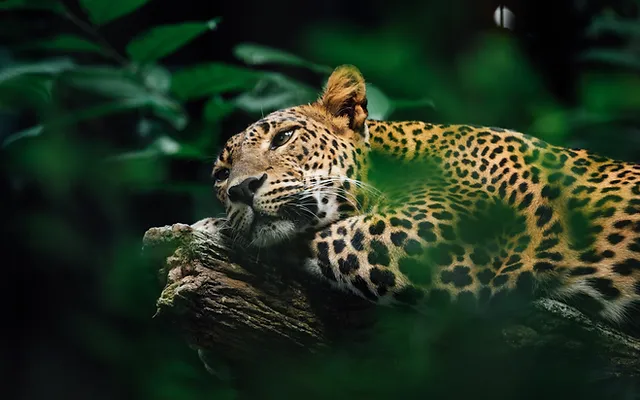The Majestic Jaguars of Costa Rica
Nestled in Costa Rica’s Cordillera Talamanca mountain range lies a lush tropical forest, a remnant of the merging of North and South America over 3 million years ago. This verdant paradise serves as a sanctuary to the magnificent jaguar, the largest spotted cat species in the Americas. Jan Schipper, a dedicated wildlife ecologist from Arizona State University, has invested two decades into the protection of these regal creatures.
Historically, jaguars had the luxury of expansive forests throughout Central America. However, as these dense rainforests were gradually converted into farmlands, the jaguars found their habitat shrinking, compelling them to consider livestock as an alternative food source, thereby increasing friction with the local farming community.
Addressing the Jaguar Predicament
Schipper’s mission encompasses not only the preservation of jaguars but also fostering a harmonious relationship between these predators, the local communities, and the government. Collaborating with Garth Paine, an acoustic ecologist from ASU, Schipper initiated a gunshot detection program within the forest, providing real-time alerts on poachers’ activities.
Furthermore, to expand and secure the jaguars’ territory, Schipper envisions a corridor linking La Amistad International Park and Corcovado National Park. Such a corridor would incorporate overpasses and underpasses to navigate the Pan-American Highway, bridging fragmented jaguar populations on either side of Costa Rica.
In Conversation with Jan Schipper
ASU News recently interviewed Schipper, delving deeper into his passion and plans.
Q: What kindled your interest in jaguar conservation?
A: Having spent a significant part of my career in Costa Rica, my journey began with smaller cats like the margay and then the oncilla. Gradually, my focus transitioned to the apex predator – the jaguar. My prime interest lay in the region’s national parks and their efficacy in sustaining entire ecosystems.
Q: How do jaguars impact the ecosystem?
A: Jaguars, as apex predators, maintain the balance in food webs, thus preserving the health of prey populations. Rejuvenating top predator populations can lead to the recovery of entire ecosystems, as observed in the restoration of the wolf population to Yosemite National Park.
Q: What challenges face the jaguar population?
A: Habitat loss is evident through satellite imagery. Hunting adds to the predicament, making the scenario increasingly bleak. La Amistad International Park houses the most substantial jaguar population, but numbers in Central America are dwindling.
Q: Why is jaguar hunting intensifying?
A: In proximity to the Panama Canal trade route, jaguars, especially the melanistic variant, fetch high prices in Asian markets, primarily China. This lucrative trade, combined with sport hunting by North Americans and Europeans, amplifies the threat.
Q: How does your team combat these challenges?
A: We aim to diminish jaguar poaching through research and community education. Our upcoming projects involve creating wildlife pathways across the Pan-American Highway and collaborating with local landowners to cultivate “Jaguar Friendly” coffee and cacao. The objective is to create natural stepping stones for jaguars, bridging national parks without displacing communities.
Original Article Found Here.


2 comments
[…] Arizona State University Ecologist Champions Jaguar Conservation in Costa Rica – ASU wildlife ecologist Jan Schipper has been involved in Costa Rican Jaguar conservation for over 20 years. According to Schipper, Jaguars help maintain a balanced ecosystem. Source: Costa Rican Times […]
[…] Arizona State University Ecologist Champions Jaguar Conservation in Costa Rica – ASU wildlife ecologist Jan Schipper has been involved in Costa Rican Jaguar conservation for over 20 years. According to Schipper, Jaguars help maintain a balanced ecosystem. Source: Costa Rican Times […]